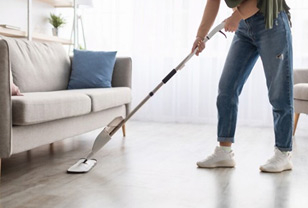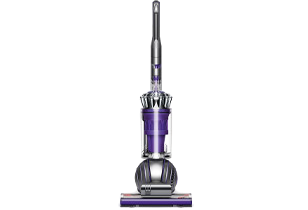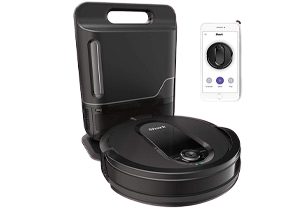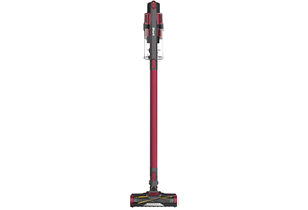How to Get Gum Out of Carpet in Minutes Without Ruining It
From using common household items to more specialized equipment, you'll find a method that suits your needs. Our comprehensive guide dives into each option for tackling this sticky foe. You'll learn how to get gum out of carpet and restore your floor's charm in no time.
What You'll Need
Essentials for All Methods:
- Soft cloth or sponge
- Blunt knife or spatula
Based on Chosen Method:
- Hair dryer
- Ice cubes or freezer packs
- Plastic bag or wrap
- Dish soap and water mixture
- White vinegar
- Soft, non-abrasive brush
- Steam cleaner
- Protective gloves (for handling chemicals)
How to Get Gum Out of Carpet
Gum on the carpet isn't a one-size-fits-all problem, and fortunately, there's more than one way to deal with it.
Take a moment to read through each method. By understanding how they work and their advantages, you can pinpoint the approach that's just right for your situation. Sometimes, the best solution is the one that fits seamlessly with what you have on hand or what feels most comfortable for you.
With a Hair Dryer
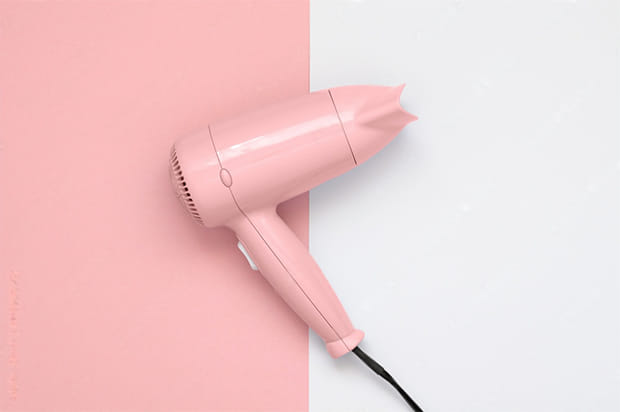
Your hair dryer is more versatile than you think
A hair dryer, that common household tool, can be your secret weapon when it comes to removing gum from your carpets. It works by applying heat to the gum, softening it, and making it more pliable, easier to remove.
This method works best on robust carpet materials that can withstand a bit of heat. You can use it for larger, more stubborn gum stains, but be careful when applying heat to your carpet. Excessive heat can damage some carpet fibers.
Instructions:
- Grab a hair dryer and set it to a moderate heat setting. You want it warm enough to soften the gum but not so hot as to melt it into the carpet fibers.
- Direct the warm air towards the gum, keeping the hair dryer a few inches away. Make sure to evenly heat the gum, but try not to heat the surrounding carpet too much.
- After a minute or two, you'll notice the gum starting to soften. At this point, take a plastic bag and press it onto the softened gum. The idea is that the gum will stick to the plastic.
- Gently pull the bag away from the carpet. The gum should come away with it. Be careful not to pull too hard, as you don't want to damage the carpet fibers.
- If any gum remains, repeat the process. It might take a few attempts to get it all out.
- Once the gum is gone, clean the area with mild detergent and warm water to remove any residual stickiness. Always do a spot test first to ensure the detergent won't discolor your carpet.
With Ice
Using cold to combat gum is a time-tested method. When gum is exposed to cold temperatures, it hardens and becomes brittle, making it significantly easier to crack and remove from your carpet.
This is an ideal method for delicate carpets where you're wary of introducing chemicals or heat.
Instructions:
- Grab a few ice cubes from your freezer, or take a freezer pack. If using ice cubes, it's a good idea to put them in a plastic bag to avoid wetting the carpet.
- Place the ice cubes or freezer pack directly onto the gum stain. Ensure full contact so the cold can penetrate and harden the gum.
- Wait for about 5-10 minutes, but keep an eye on the gum. You want it to be frozen but not so much that the surrounding carpet area becomes too wet.
- Once the gum is frozen, take a blunt object like a spoon's handle or a butter knife and gently chip away at the gum. It should crumble away easily. If the gum starts getting stretchy again, reapply the cold source.
- After removing the bulk of the gum, there might be some residue left. Gently scrape off as much as you can without damaging the carpet fibers.
- Clean the spot with a mix of mild detergent and warm water to get rid of any lingering stickiness. Remember to do a spot test first to ensure the detergent won't stain or discolor your carpet.
Be patient with this method. If the gum doesn't come off during the first attempt, don't hesitate to reapply the ice or freezer pack and try again. And always be gentle when chipping away to avoid pulling out or damaging the carpet fibers.
With Oil-Based Solutions
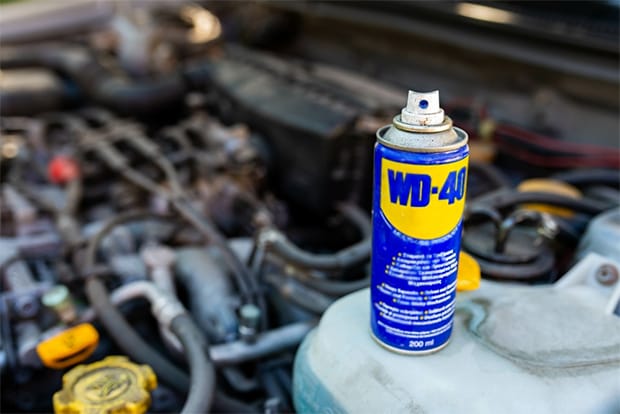
Beyond engines, WD-40 has a knack for gum removal
Oil-based solutions work wonders when it comes to loosening sticky substances like gum. They help break down the adhesive nature of the gum, making it less clingy to your carpet fibers.
The oils in these products envelop the gum, breaking its grip on the carpet. Over time, the gum becomes saturated with the oil, making it much easier to slide off or be gently scraped away.
This approach is suitable for most carpets, but you need to be cautious. While the oil helps in removing the gum, it can leave a residue that might be a tad challenging to get out.
It's an excellent choice for stubborn gum spots, but ensure you're okay with putting in a bit more effort to remove any oily residue afterward.
When deciding on an oil-based solution, consider what you have available and the size of the gum spot:
- Peanut Butter: This might sound odd, but peanut butter can be a secret weapon against gum. Opt for the smooth variety, as it's less messy and easier to work with.
- WD-40: A household staple for many, it's highly effective against gum. However, always ensure your space is well-ventilated when using it, and do a patch test first to avoid any surprises.
- Oil-Based Cleaning Products: Some cleaning products are specially designed to tackle sticky substances. If you're heading to the store, look for one that mentions adhesive or gum removal.
Note: Always test a small, inconspicuous spot on your carpet before applying any product. This ensures that there's no discoloration or adverse reaction.
Instructions:
- Start by selecting your product and then dabbing a small amount directly onto the gum. Don't drench it; a little goes a long way.
- Let it sit for a bit, giving it time to work its magic. As the minutes pass, you'll notice the gum absorbing the oil and becoming less sticky.
- Once you think it's ready, take a blunt-edged tool, like the back of a butter knife or an old credit card, and gently scrape at the gum. You'll find it sliding off the carpet with much less resistance than before. Remember to be gentle; the idea is to remove the gum, not the carpet fibers.
- After you've successfully detached the gum, there's still a bit of work left. You might notice an oily spot where the product was applied. This is normal. Take a clean cloth and a mixture of dish soap and warm water. Gently dab at the area, working the soapy water into the fibers to break down the oil.
- After a few minutes, blot the area with a clean, dry towel. This should lift away most of the oil, leaving your carpet looking fresh.
With Vinegar Solution
Vinegar, a staple in many household pantries, is not just for cooking. It's an acidic solution that acts as a natural solvent and can break down many sticky residues, including gum. Its chemical properties allow it to dissolve the bond that the gum has with carpet fibers, enabling easier removal.
One major benefit of using vinegar is its safety profile. It's non-toxic, making it safe for homes with pets or children. However, given its strong scent, some people might find the odor off-putting. Thankfully, this smell dissipates once the vinegar dries.
For this method, white vinegar is the best choice. Its clear nature ensures no staining on your carpet, and it tends to be more potent than other vinegar varieties when it comes to cleaning.
Instructions:
- Start by pouring a small amount of white vinegar into a microwave-safe bowl. Heat it for about 20 seconds in the microwave. It should be warm, not boiling hot.
- Using a clean cloth or sponge, saturate the gum with the warmed vinegar. Ensure the gum is fully soaked, and let it sit for a few minutes. This gives the vinegar time to work its way into the gum and begin breaking it down.
- As the vinegar does its job, the gum will start to soften. Take a soft brush or an old toothbrush and gently scrub the gum spot. With the combination of the vinegar's solvent properties and the mechanical action of the brush, the gum will begin to release from the carpet fibers.
- Once you've scrubbed away most of the gum, take a clean, dry cloth and blot the area to remove any leftover vinegar and gum residue. Following that, with a damp cloth (using plain water), gently dab the spot to rinse out any remaining vinegar. It helps ensure no residue is left behind and also helps neutralize the vinegar smell.
- Leave the treated area to air dry. If you're in a hurry, you can use a hairdryer in a cool setting to speed up the drying process.
- Remember, while vinegar is a gentle and natural solution, always do a patch test on a hidden part of your carpet. This ensures that the carpet material responds well to the vinegar without any discoloration or adverse effects.
With Rubbing Alcohol
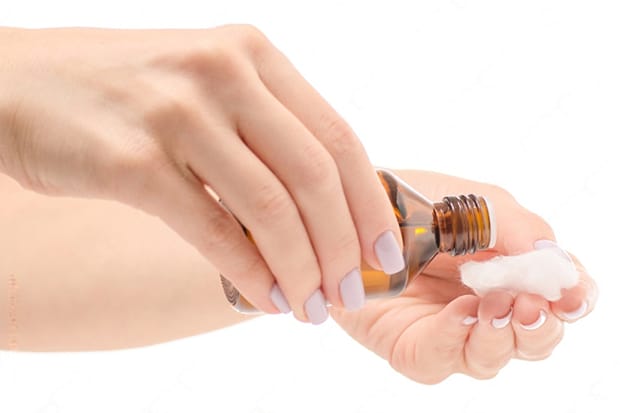
For gum on carpets, trust in some rubbing alcohol
Rubbing alcohol (isopropyl alcohol) is another powerhouse when it comes to removing gum. It's a solvent that can dissolve a range of adhesives and sticky substances. When applied to gum, it works by breaking down its structure, making it less tacky and easier to lift off.
One advantage of rubbing alcohol is its fast-evaporating nature, ensuring that no residues are left behind. However, it's important to work in a well-ventilated area since the fumes can be quite strong.
Instructions:
- First and foremost, protect the surrounding area of the carpet. Place a cloth or some paper towels around the gum spot to prevent any accidental spills from affecting other parts of the carpet.
- Moisten a clean white cloth with a bit of rubbing alcohol. You don't want it dripping wet, just damp enough.
- Press the cloth against the gum and hold it there for a few moments. This allows the rubbing alcohol to seep into the gum and start its magic.
- As the gum absorbs the rubbing alcohol and starts to lose its stickiness, use a blunt tool, like the edge of a spoon or a butter knife, to carefully scrape the gum off the carpet. The gum should come off more effortlessly than before.
- Once the gum is removed, dab the area with a clean cloth soaked in lukewarm water. This will help to clean out any residual rubbing alcohol and prevent it from affecting the carpet fibers.
- Pat dry the spot with a towel and let it air dry completely. As rubbing alcohol evaporates quickly, this shouldn't take too long.
A word of caution: always test the rubbing alcohol on a hidden spot of the carpet first. Some dyes or materials might not react well to it.
On top of that, ensure that you're using rubbing alcohol and not any other type, as others might not be as effective and can potentially stain your carpet.
With Commercial Gum Removers
Commercial gum removers are specifically formulated to tackle stubborn gum residues. These products contain solvents designed to break down the gum's structure, making it easy to scrape or blot away. Because they're engineered for this purpose, they often work faster and more efficiently than home remedies.
However, since they contain chemicals, it's essential to read and follow the manufacturer's instructions carefully. Also, using them in a well-ventilated space is recommended due to possible fumes.
Instructions:
- Begin by shaking the can or bottle well, ensuring that the solution inside is mixed thoroughly.
- Identify the gum spot on your carpet and protect the surrounding area to ensure the product is applied only where needed. You can do this by placing an old cloth or some paper towels around the gum spot.
- Apply a small amount of the gum remover directly onto the gum. Ensure you follow the instructions on the label regarding how long you should let the product sit.
- As the gum softens, use a blunt scraper, like a butter knife or the edge of a credit card, to gently lift the gum away from the carpet fibers. Some gum removers might allow you to simply blot the gum away with a cloth.
- After removing the gum, it's crucial to clean the area to get rid of any residue from the remover. Dab the spot with a cloth soaked in lukewarm water.
- Finish by patting the area dry with a clean towel or cloth.
With a Steam Cleaner
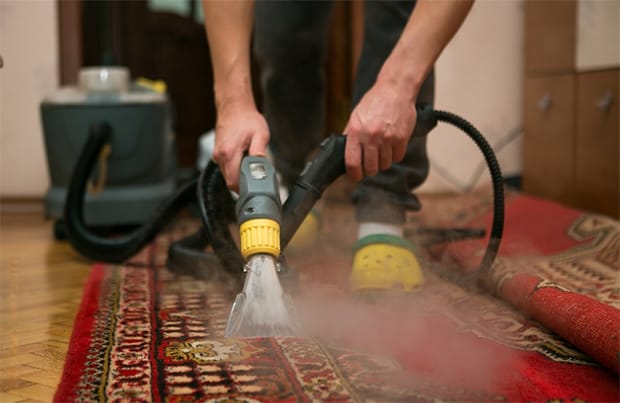
Got a steam cleaner? It's perfect for this gum mess
Steam cleaners are powerful tools when it comes to lifting dirt, grime, and various stains from carpets, and they're equally potent when faced with gum.
The heat from the steam softens the gum, making it less adhesive and easier to lift from carpet fibers. Plus, using a steam cleaner avoids the need for chemicals, making it an eco-friendly option.
Always refer to your carpet's care guidelines before using a steam cleaner. Some delicate or specific carpet materials might not react well to the heat.
Instructions:
- Begin by setting up your steam cleaner. Ensure the water reservoir is full and that the machine is prepped as per the manufacturer’s instructions.
- Pre-heat the steam cleaner. Most models will have a light indicator or a sound notification when they're ready to use. This ensures you're working with the right amount of heat.
- Approach the gum-covered area and release steam directly onto the gum spot. Keep the nozzle close enough to ensure concentrated steam application but not so close that it might damage the carpet fibers.
- Allow the steam to penetrate the gum for a few seconds. As the gum warms up, it should begin to soften.
- Using a soft-bristle brush or cloth, gently start lifting the gum off the carpet. As before, work in a single direction to avoid pushing the gum deeper into the fibers. Depending on the gum's tenacity, you might need to alternate between steaming and scraping multiple times.
- Once the gum is removed, go over the area with the steam cleaner once more. This will help lift any microscopic gum residue and also sanitize the spot.
- Allow the area to dry thoroughly. Steam cleaning introduces moisture to the carpet, so it's crucial to let it air out to prevent mold or mildew.
If any slight gum residue remains after the area has dried, you can lightly dab it with a cloth soaked in white vinegar or rubbing alcohol to break it down and remove the last of it.
Conclusion
From unexpected gum mishaps to deliberate gum attacks by little feet, carpets face a lot of sticky situations.
With our handy guide on how to get gum out of carpet, you're equipped with the knowledge and techniques to handle such incidents like a pro. Remember, quick action and the right method can transform your gum-smeared carpet back to its original glory.
FREQUENTLY ASKED QUESTIONS
- 01. How to Get Slime Out of Carpet?
-
Begin by scraping away as much of the slime as possible using a spatula or an old credit card. Then, create a mixture of white vinegar and warm water in equal parts.
Apply the solution to the stain and gently scrub using a soft brush. Once the slime breaks down, blot the area with a clean cloth and then vacuum once dry. This method usually takes care of most slime mishaps.
- 02. How to Avoid Gum on Flooring?
-
To sidestep this sticky situation, ensure you have designated areas for chewing gum disposal like trash bins or wrappers. Educate family members, especially kids, about the importance of proper gum disposal.
Regularly inspect and clean shoes to avoid tracking gum indoors. If you're thinking of a more permanent solution, consider flooring options that are resistant to gum adhesion.
You can also replace carpet with vinyl flooring, for instance, as vinyl surfaces are easier to clean and less prone to gum sticking.
- 03. How to Choose the Cleaner Machine for Gum?
-
Picking the right machine to tackle gum on carpets depends on a few factors: the carpet's fabric, the extent of the gum stain, and the frequency of such incidents.
A highly recommended option is the Hoover Smartwash Automatic Carpet Cleaner FH52000. It's known for its deep cleaning prowess and automatic cleaning technology, making gum removal a breeze.
- 04. Is It Safe to Use Chemicals to Remove Gum From Carpets?
-
Yes, certain chemicals can safely remove gum from carpets. However, always test any chemical or solvent in an inconspicuous area of the carpet first to ensure it doesn't damage or discolor the fibers.
It's also a good idea to wear protective gloves when handling chemicals and ensure the room is well-ventilated.
- 05. Can I Prevent Gum From Hardening on the Carpet?
-
While it's best to address a gum spill immediately, if you find dried or hardened gum, you can soften it. Using a hair dryer set on low heat and directing it towards the gum for a few minutes can make it pliable.



